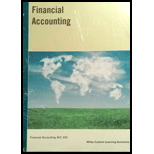
(a)
Product life cycle:
Every corporation in its operational life cycle has to pass through various phases known as “Product life cycle”. There are various stages of product life cycle like introductory phase, Growth phase, maturity phase and decline phase.
Introductory phase:
In this stage, there will be negative
Growth phase:
In this stage, the company generates certain amount of cash for running the business operations. In this stage, the net income will be higher than the cash flow from operating activities.
Maturity phase:
In this stage, the volume of sales will be at its highest peak. In this stage, net income and cash flow from operating activities will be almost similar. The cash flow from operating activities will be higher. Therefore the company will plan to pay dividends to its shareholders’ or redeem a debt or even plan for buyback of its stock.
Decline phase:
In this stage, the profits and volume of sales starts to decline or decrease. The cash flow from operating activities also decreases. Therefore the cash flow from financing activities might be negative as it pays for dividend and buy back of stock. But cash flow from investing activities might be positive as the company would try to increase its
To explain: The reason why the cash provided by operating activities likely to be lower than net income during the growth phase.
(b)
To explain: The reason why the net cash from investing activities are positive during late maturity phase and during decline phase.
Want to see the full answer?
Check out a sample textbook solution
Chapter 12 Solutions
FINANCIAL ACCOUNTING>IC<
- I don't need ai answer general accounting questionarrow_forwardCan you help me solve this general accounting problem using the correct accounting process?arrow_forwardA company is considering two different inventory valuation methods: FIFO (First-In, First-Out) and LIFO (Last-In, First-Out). Discuss the potential impact of each method on the company's financial statements during periods of rising prices. Which method would result in a higher cost of goods sold and lower net income?arrow_forward
- HarrisTech Inc.’s year-end 2023 balance sheet lists current assets of $915,000, fixed assets of $748,000, current liabilities of $592,000, and long-term debt of $801,000. What is HarrisTech’s total stockholders’ equity?arrow_forwardWhat was the absorption costing net operating income last year ?arrow_forwardcontribution margin ratio provide answer pleasearrow_forward
- Principles of Accounting Volume 2AccountingISBN:9781947172609Author:OpenStaxPublisher:OpenStax CollegePrinciples of Accounting Volume 1AccountingISBN:9781947172685Author:OpenStaxPublisher:OpenStax College
 Cornerstones of Financial AccountingAccountingISBN:9781337690881Author:Jay Rich, Jeff JonesPublisher:Cengage Learning
Cornerstones of Financial AccountingAccountingISBN:9781337690881Author:Jay Rich, Jeff JonesPublisher:Cengage Learning  Managerial Accounting: The Cornerstone of Busines...AccountingISBN:9781337115773Author:Maryanne M. Mowen, Don R. Hansen, Dan L. HeitgerPublisher:Cengage Learning
Managerial Accounting: The Cornerstone of Busines...AccountingISBN:9781337115773Author:Maryanne M. Mowen, Don R. Hansen, Dan L. HeitgerPublisher:Cengage Learning College Accounting, Chapters 1-27AccountingISBN:9781337794756Author:HEINTZ, James A.Publisher:Cengage Learning,
College Accounting, Chapters 1-27AccountingISBN:9781337794756Author:HEINTZ, James A.Publisher:Cengage Learning,





